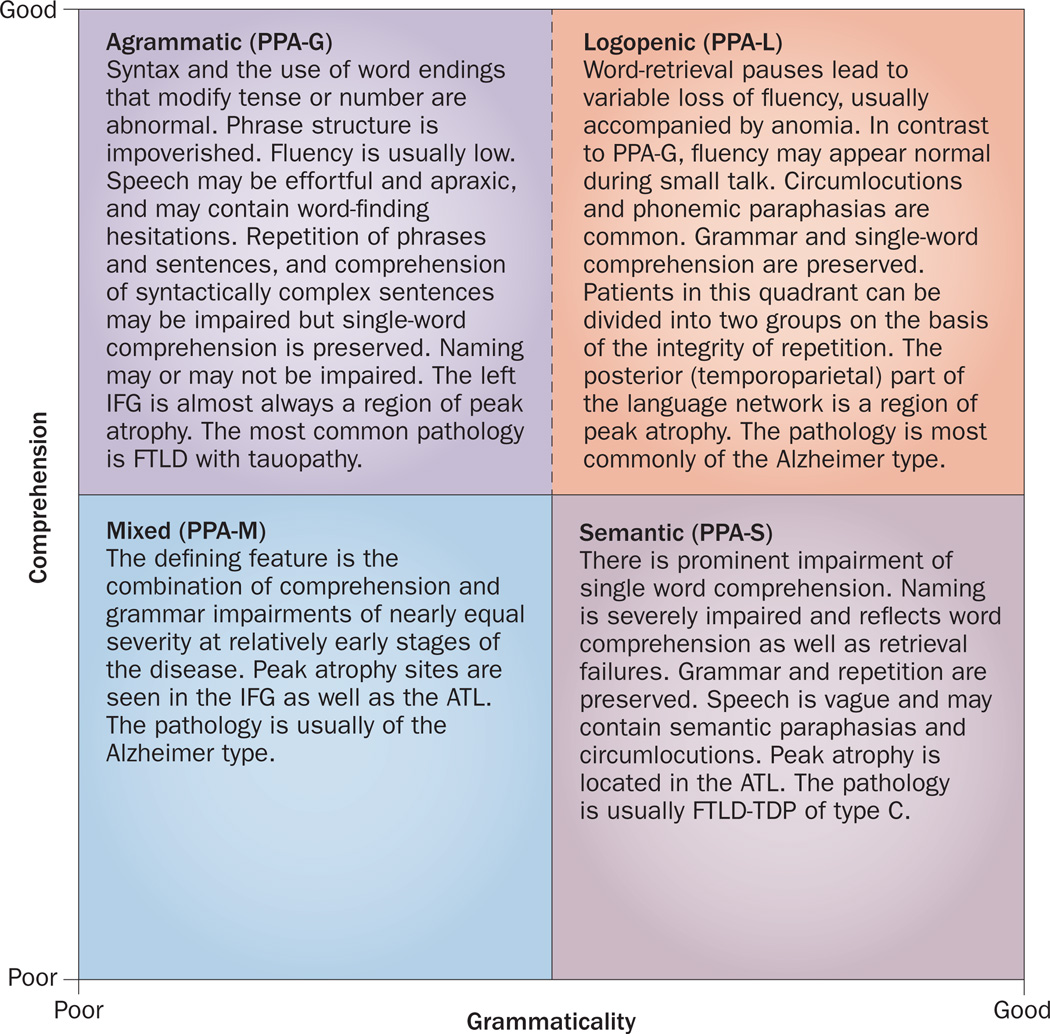Figure 2.
Template approach to the classification of PPA. This simplified approach is based on the integrity of single-word comprehension and grammaticality of sentences. The patient must fulfil the root diagnosis of PPA before undergoing classification according to this system. The performance of the classification system is optimal if conducted neither too early nor too late in the course of the disease. The individual tests and cut-off scores must be determined empirically, and depend on the severity of the aphasia.26,31 The broken boundary line between the PPA-G and PPA-L quadrants represents the challenge that is frequently faced in differentiating these two aphasia subtypes. The upper right quadrant can potentially contain the most heterogeneous population. In practice, however, it becomes populated almost exclusively by patients who are clinically logopenic, either with or without phrase and sentence repetition impairments. Abbreviations: ATL, anterior temporal lobe; FTLD, frontotemporal lobar degeneration; FTLD-TDP, FTLD with TAR DNA-binding protein 43 pathology; IFG, inferior frontal gyrus; PPA, primary progressive aphasia; PPA-G, agrammatic PPA; PPA-L, logopenic PPA; PPA-M, mixed PPA; PPA-S, semantic PPA.

